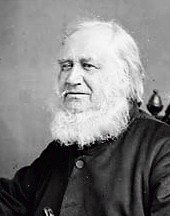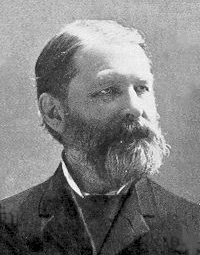History of “Here Is Love”
from the website: http://www.celebratingholidays.com/?page_id=10756
Words by William Rees (1802-1883), Published mid-1800s
William Rees’ only formal education was during the winter months at
the local village school. From an early age, he spent most of his time
working on the family farm in Wales — mainly as a shepherd. Despite the
obligations of the farm, William had a love of learning and was
self-educated in many subjects.
William was also a committed Christian and a gifted communicator. In
1828, he joined an Independent church (a Christian church that was not
part of the state church). It was not long before he was invited to
preach, and over the course of the next decade, William became famous
for his preaching. In 1843, William moved to Liverpool to pastor, and he
remained there for over 30 years (until he retired in 1875).
William also founded a newspaper in Liverpool. According to
Hymnary.org, “It was the first successful Welsh newspaper, and it was
his series, ‘The Letters of an Old Farmer,’ which breathed life into it.
These were written in the dialect of the editor’s home county and dealt
with such subjects as religion, politics, [and law].”1 William had a keen interest in politics and even pleaded for the abolition of slavery in the US.
As a prolific writer, William wrote on a variety of topics: hymns,
plays, politics, sermons, and Christian doctrine. Of his many beautiful
hymns, “Here is Love” is a special gem. It came to be known as “The Love
Song of the Revival” because it was used so often during the 1904
evangelistic outreaches in Wales. Thousands of people came to faith
during the 1904 Revival, and it is thought to have triggered revivals in
many surrounding countries. The tune was introduced to English speakers
when William Edwards translated it from Welsh to English in 1900.
Tune “Here Is Love” by Robert Lowry (1826-1899), Published in 1876
Robert Lowry was born in Philadelphia in 1826. As a teen, he was
active in teaching Sunday school, as well as serving in the choir of his
church. For college, Robert attended the University at Lewisburg, PA
(now Bucknell University), and he graduated with the highest honors. He
began working as a pastor, as well as a professor of literature.
According to the Biography of Gospel Song and Hymn Writers:
“Dr. Lowry was a man of rare administrative ability, a most excellent
preacher, a thorough Bible student, and whether in the pulpit or upon
the platform, always a brilliant and interesting speaker. He was of a
genial and pleasing disposition, and a high sense of humor was one of
his most striking characteristics. Very few men had greater ability in
painting pictures from the imagination. He could thrill an audience with
his vivid descriptions, inspiring others with the same thoughts that
inspired him.”
While preaching was Robert’s main work for many years, he always had a
deep love of music. In time, he began dedicating more effort to music
and by the end of his life, he had written dozens of popular hymns and
tunes such as: “Christ Arose (Low in the Grave He Lay),” “I Need Thee Every Hour,” “Nothing But the Blood of Jesus,” “Shall We Gather at the River?, and “We’re Marching to Zion.”



No comments :
Post a Comment